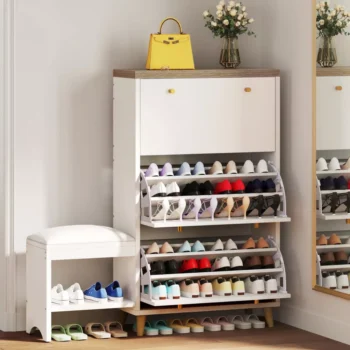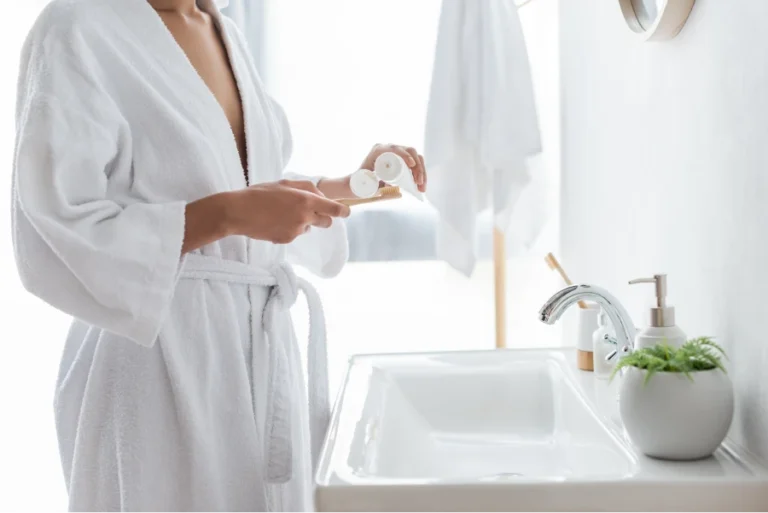Organize Your Footwear: The Ultimate Guide to Shoe Cabinets
A well-organized shoe cabinet can transform the way you manage your footwear, bringing order to chaos and making it easier to find the perfect pair for any occasion. Whether you have a vast collection or just a few favorite pairs, a shoe cabinet can be a game-changer for your home’s organization. In this ultimate guide, we’ll explore everything you need to know to choose, set up, and maintain the perfect shoe cabinet.
1. Assess Your Shoe Storage Needs
Before diving into the details, take stock of your shoe collection. Consider the following:
- Quantity: How many pairs of shoes do you need to store? This will determine the size and capacity of the shoe cabinet you need.
- Types of Shoes: Different types of shoes have different storage requirements. High heels, boots, and sneakers may need different configurations.
- Frequency of Use: Shoes you wear daily should be easily accessible, while less frequently used pairs can be stored in less accessible spaces.
2. Choose the Right Type of Shoe Cabinet
Shoe cabinets come in various styles and configurations. Here are some popular options:
- Shoe Racks: Open racks are perfect for quick access and ventilation. They are great for everyday shoes and can fit in closets, entryways, or garages.
- Closed Shoe Cabinets: These cabinets hide your shoes behind doors, keeping your space looking tidy. They come in various styles, from modern to traditional.
- Shoe Cubbies: Individual cubbies provide designated spaces for each pair of shoes, making it easy to keep pairs together and organized.
- Over-the-Door Organizers: Ideal for small spaces, these organizers hang over doors and provide multiple pockets for shoes.
- Under-Bed Storage: Great for off-season footwear, under-bed storage solutions keep shoes out of sight while protecting them from dust.
3. Consider the Material
The material of your shoe cabinet affects its durability, appearance, and maintenance. Common materials include:
- Wood: Solid wood or engineered wood cabinets offer a classic look and are very durable. They can be more expensive and require regular maintenance.
- Metal: Metal cabinets are sturdy and often have a sleek, modern look. They are easy to clean and can withstand heavy use.
- Plastic: Lightweight and affordable, plastic cabinets are easy to move and clean. However, they may not be as durable as wood or metal.
- Fabric: Fabric shoe organizers are lightweight and portable. They are suitable for temporary or seasonal storage but may not be as durable.
4. Measure Your Space
Before purchasing a shoe cabinet, measure the space where you plan to place it. Consider the height, width, and depth of the available area. Make sure to leave enough room for doors or drawers to open fully. Additionally, think about the surrounding space to ensure the cabinet doesn’t obstruct walkways or other furniture.
5. Optimize the Layout
The internal layout of your shoe cabinet is crucial for maximizing storage and accessibility. Look for features like:
- Adjustable Shelves: These allow you to customize the space to fit different types of shoes, from flats to boots.
- Pull-Out Drawers: Drawers can help keep smaller items like socks and shoe accessories organized.
- Hooks and Hangers: Useful for storing items like sandals or flip-flops.
- Ventilation: Cabinets with mesh panels or perforations ensure good airflow, preventing odors and mold growth.
6. Maintain Your Shoe Cabinet
Regular maintenance is key to keeping your shoe cabinet in top condition and your shoes well-organized. Here are some tips:
- Clean Regularly: Dust and clean the cabinet and shoes regularly to prevent dirt buildup.
- Rotate Seasonally: Store off-season shoes in less accessible areas and rotate them as needed. This keeps your current season’s footwear easily accessible.
- Use Shoe Trees: For maintaining the shape of your shoes, especially leather ones, use shoe trees.
- Check for Damage: Periodically check for any signs of damage to the cabinet or shoes and address them promptly.
7. Personalize Your Shoe Storage
Make your shoe cabinet uniquely yours by adding personal touches. You can:
- Label Shelves or Cubbies: Use labels to quickly identify where each type of shoe belongs.
- Add Lighting: LED strip lights or small battery-operated lights can help illuminate the interior, making it easier to find shoes.
- Decorate: Add a small plant, decorative boxes, or a stylish tray for keys and other essentials on top of the cabinet.
8. Budget Wisely
Your budget will influence the type of shoe cabinet you can afford. There are options at every price point, from budget-friendly to high-end designer pieces. Determine your budget before shopping and look for the best value within your price range. Remember, investing in a quality shoe cabinet can save you money in the long run by protecting your footwear and keeping it in good condition.
Conclusion
Organizing your footwear with the perfect shoe cabinet can greatly enhance your home’s functionality and aesthetics. By assessing your needs, choosing the right type of cabinet, and maintaining it properly, you can create an organized and stylish space that makes it easy to find and care for your shoes. Happy organizing!





